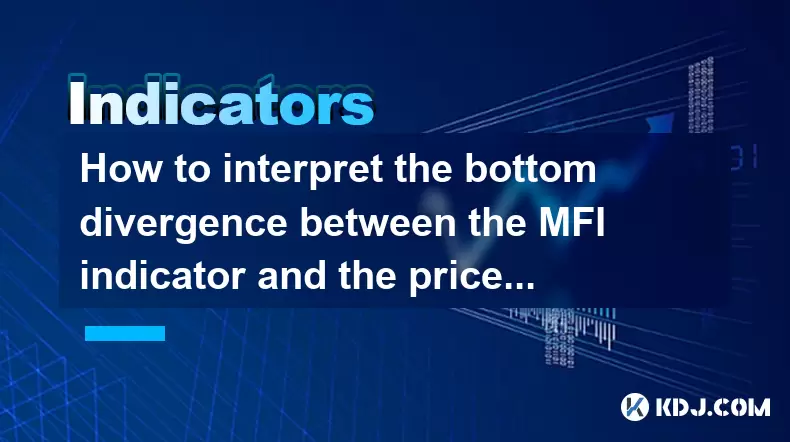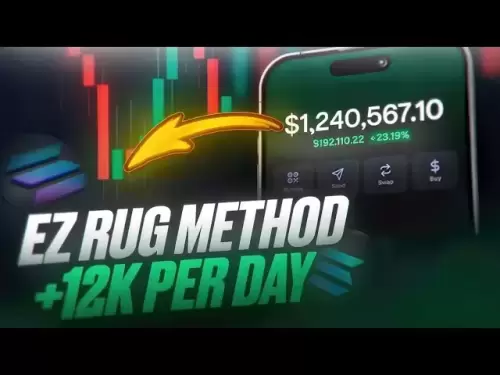-
 Bitcoin
Bitcoin $108,443.4896
0.48% -
 Ethereum
Ethereum $2,597.3843
2.42% -
 Tether USDt
Tether USDt $1.0002
0.02% -
 XRP
XRP $2.3025
1.83% -
 BNB
BNB $661.6147
0.34% -
 Solana
Solana $151.4228
1.80% -
 USDC
USDC $1.0000
0.00% -
 TRON
TRON $0.2877
0.14% -
 Dogecoin
Dogecoin $0.1705
1.56% -
 Cardano
Cardano $0.5848
1.48% -
 Hyperliquid
Hyperliquid $38.8396
3.64% -
 Bitcoin Cash
Bitcoin Cash $507.5891
2.30% -
 Sui
Sui $2.8908
1.27% -
 Chainlink
Chainlink $13.8521
4.52% -
 UNUS SED LEO
UNUS SED LEO $9.1329
0.87% -
 Stellar
Stellar $0.2603
5.49% -
 Avalanche
Avalanche $18.1289
1.71% -
 Shiba Inu
Shiba Inu $0.0...01182
1.89% -
 Toncoin
Toncoin $2.8045
2.20% -
 Hedera
Hedera $0.1601
2.64% -
 Litecoin
Litecoin $87.5825
1.89% -
 Monero
Monero $315.6725
-0.03% -
 Polkadot
Polkadot $3.4216
2.10% -
 Dai
Dai $1.0000
0.00% -
 Ethena USDe
Ethena USDe $1.0007
0.06% -
 Bitget Token
Bitget Token $4.2988
-0.01% -
 Uniswap
Uniswap $7.5739
2.72% -
 Aave
Aave $290.8204
4.41% -
 Pepe
Pepe $0.0...01004
2.03% -
 Pi
Pi $0.4611
1.11%
How to interpret the bottom divergence between the MFI indicator and the price?
2025/06/29 16:21

Understanding the Basics of MFI Indicator
The Money Flow Index (MFI) is a momentum oscillator that combines price and volume data to assess overbought or oversold conditions in a financial asset, including cryptocurrencies. Unlike other indicators such as RSI, which only considers price, the MFI incorporates volume, making it more robust in identifying potential reversals. The MFI ranges from 0 to 100, with readings above 80 typically considered overbought and below 20 considered oversold.
When analyzing crypto markets, traders often rely on the MFI to confirm trends or spot divergences between the indicator and actual price movements. A bottom divergence occurs when the price makes a new low, but the MFI does not confirm this move by also hitting a lower low. This suggests weakening selling pressure and potential reversal upwards.
Important Note:
Divergence doesn't always lead to a reversal. It must be used in conjunction with other technical tools for confirmation.Identifying Bottom Divergence: Key Characteristics
To interpret a bottom divergence correctly, you must first identify its visual and structural characteristics:
- Price forms a lower low while the MFI forms a higher low.
- The divergence should occur after a significant downtrend.
- Volume during the price decline should decrease, which reflects diminishing bearish strength.
- The MFI line should remain above the 20 level or show signs of rising from that zone.
This pattern indicates that despite the price dropping, buying pressure is increasing or selling pressure is decreasing. In cryptocurrency trading, where volatility is high, recognizing this early can offer strategic entry points.
Here are some steps to visually confirm a bottom divergence:
- Plot the MFI on your chart alongside the price.
- Identify two consecutive lows in price.
- Compare these lows with the corresponding MFI values.
- If the second low in price is lower than the first, but the MFI’s corresponding low is higher, a bottom divergence is forming.
How to Interpret Bottom Divergence in Crypto Markets
In the volatile world of cryptocurrency, bottom divergence between the MFI and price can signal strong reversal opportunities. Here's how to interpret it step-by-step:
- Look at a confirmed downtrend in any major crypto pair like BTC/USDT or ETH/USDT.
- Observe if the price creates a new low that isn’t supported by the MFI dipping further.
- Check if the MFI starts to trend upward even as the price continues to fall.
- Watch for a bullish candlestick pattern or a break above a key resistance level to confirm the reversal.
For example, if Bitcoin drops to $58,000 and then to $57,000, but the MFI shows higher lows each time, it signals that sellers are losing control. Traders might consider entering long positions once the price breaks out of the current downtrend.
Remember:
False signals are common in crypto due to pump-and-dump schemes and whale activities. Always verify divergence using additional indicators like moving averages or MACD.Practical Steps to Trade Based on MFI Bottom Divergence
If you're planning to trade based on MFI bottom divergence, follow these detailed steps:
- Select a reliable trading platform that supports MFI and allows customization.
- Apply the MFI indicator to your chart with default settings (usually 14 periods).
- Switch to a timeframe suitable for your strategy — daily or 4-hour charts work best for spotting meaningful divergences.
- Zoom into recent price action and look for mismatched lows between price and MFI.
- Draw a trendline connecting the price lows and another for the MFI lows.
- Wait for the price to break above a recent swing high or resistance level.
- Enter a long position once the breakout is confirmed with increased volume.
- Set a stop-loss slightly below the most recent low to manage risk.
- Target a profit level based on previous resistance zones or Fibonacci extensions.
By following these steps meticulously, you can avoid premature entries and increase your probability of success in trading MFI-based divergences.
Common Mistakes When Interpreting MFI Divergence
Many traders misinterpret MFI divergence due to several common pitfalls:
- Ignoring the context: Divergence in a strong trending market may not result in a reversal.
- Using improper timeframes: Short-term charts (like 15-minute or 1-hour) may produce too many false signals.
- Not waiting for confirmation: Entering a trade solely based on divergence without confirming candlestick or volume patterns leads to losses.
- Misaligning highs/lows: Failing to accurately match price and MFI swings leads to incorrect divergence identification.
Additionally, some traders fail to adjust the MFI period according to market conditions. In fast-moving crypto markets, using a shorter period (e.g., 7 instead of 14) may provide more responsive signals, though it increases noise.
Tip:
Use multiple timeframes to validate divergence. For instance, check for divergence on both 4-hour and daily charts before taking action.Frequently Asked Questions
Q: Can MFI divergence be used in sideways or ranging markets?
A: Yes, MFI divergence can still appear in ranging markets. However, it tends to be less reliable compared to trending environments. In such cases, traders should combine it with support/resistance levels or Bollinger Bands for better accuracy.
Q: What is the difference between regular and hidden divergence in MFI?
A: Regular divergence, like bottom divergence, signals a potential trend reversal. Hidden divergence, on the other hand, suggests trend continuation. For example, a hidden bottom divergence occurs when the price makes a higher low but the MFI makes a lower low, indicating underlying strength.
Q: Is MFI divergence applicable to all cryptocurrencies?
A: While MFI divergence works across various assets, it may perform differently depending on the liquidity and volatility of the specific cryptocurrency. Major coins like Bitcoin and Ethereum tend to give clearer signals compared to smaller altcoins.
Q: How often should I recalibrate the MFI settings?
A: There's no fixed rule, but adjusting the MFI period based on market behavior can improve performance. During high volatility, a shorter period (like 7) may help capture faster moves, while longer periods (like 21) may suit calmer markets.
부인 성명:info@kdj.com
제공된 정보는 거래 조언이 아닙니다. kdj.com은 이 기사에 제공된 정보를 기반으로 이루어진 투자에 대해 어떠한 책임도 지지 않습니다. 암호화폐는 변동성이 매우 높으므로 철저한 조사 후 신중하게 투자하는 것이 좋습니다!
본 웹사이트에 사용된 내용이 귀하의 저작권을 침해한다고 판단되는 경우, 즉시 당사(info@kdj.com)로 연락주시면 즉시 삭제하도록 하겠습니다.
- Magacoin 's Meme Coin Surge : 다음 Dogecoin?
- 2025-07-09 12:30:12
- Bitcoin Price : 안정성이 $ 100K 이상입니까? 몬스터 랠리를 설정합니까?
- 2025-07-09 12:30:12
- Magacoin Finance : TrustScore와 밈 동전의 미래
- 2025-07-09 12:35:12
- Crypto Whale의 포트폴리오 : 디코딩 토큰은 숨겨져 있으며 새로운 트렌드
- 2025-07-09 08:30:12
- 희귀 동전, 행운의 발견, 귀중한 동전 : 일상적인 변화에서 보물을 발굴
- 2025-07-09 08:30:12
- Coinbase, Altcoins 및 Empire State : New York Crypto의 새로운 시대?
- 2025-07-09 09:30:12
관련 지식

How to trade Dogecoin based on funding rates and open interest
2025-07-07 02:49:34
<h3>Understanding Funding Rates in Dogecoin Trading</h3><p>Funding rates are periodic payments made to either long or short traders ...

What is the 'God Mode' indicator for Dogecoin
2025-07-07 16:42:48
<h3>Understanding the 'God Mode' Indicator</h3><p>The 'God Mode' indicator is a term that has emerged within cryptocurrency trading ...

Using Gann Fans on the Dogecoin price chart
2025-07-07 21:43:10
<h3>Understanding Gann Fans and Their Relevance in Cryptocurrency Trading</h3><p>Gann Fans are a technical analysis tool developed b...

How to spot manipulation on the Dogecoin chart
2025-07-06 12:35:49
<h3>Understanding the Basics of Chart Manipulation</h3><p>Chart manipulation in the cryptocurrency space, particularly with Dogecoin...

Dogecoin market structure break explained
2025-07-07 02:51:32
<h3>Understanding the Dogecoin Market Structure</h3><p>Dogecoin, initially created as a meme-based cryptocurrency, has evolved into ...

How to backtest a Dogecoin moving average strategy
2025-07-08 04:50:05
<h3>What is a Moving Average Strategy in Cryptocurrency Trading?</h3><p>A moving average strategy is one of the most commonly used t...

How to trade Dogecoin based on funding rates and open interest
2025-07-07 02:49:34
<h3>Understanding Funding Rates in Dogecoin Trading</h3><p>Funding rates are periodic payments made to either long or short traders ...

What is the 'God Mode' indicator for Dogecoin
2025-07-07 16:42:48
<h3>Understanding the 'God Mode' Indicator</h3><p>The 'God Mode' indicator is a term that has emerged within cryptocurrency trading ...

Using Gann Fans on the Dogecoin price chart
2025-07-07 21:43:10
<h3>Understanding Gann Fans and Their Relevance in Cryptocurrency Trading</h3><p>Gann Fans are a technical analysis tool developed b...

How to spot manipulation on the Dogecoin chart
2025-07-06 12:35:49
<h3>Understanding the Basics of Chart Manipulation</h3><p>Chart manipulation in the cryptocurrency space, particularly with Dogecoin...

Dogecoin market structure break explained
2025-07-07 02:51:32
<h3>Understanding the Dogecoin Market Structure</h3><p>Dogecoin, initially created as a meme-based cryptocurrency, has evolved into ...

How to backtest a Dogecoin moving average strategy
2025-07-08 04:50:05
<h3>What is a Moving Average Strategy in Cryptocurrency Trading?</h3><p>A moving average strategy is one of the most commonly used t...
모든 기사 보기

























































































